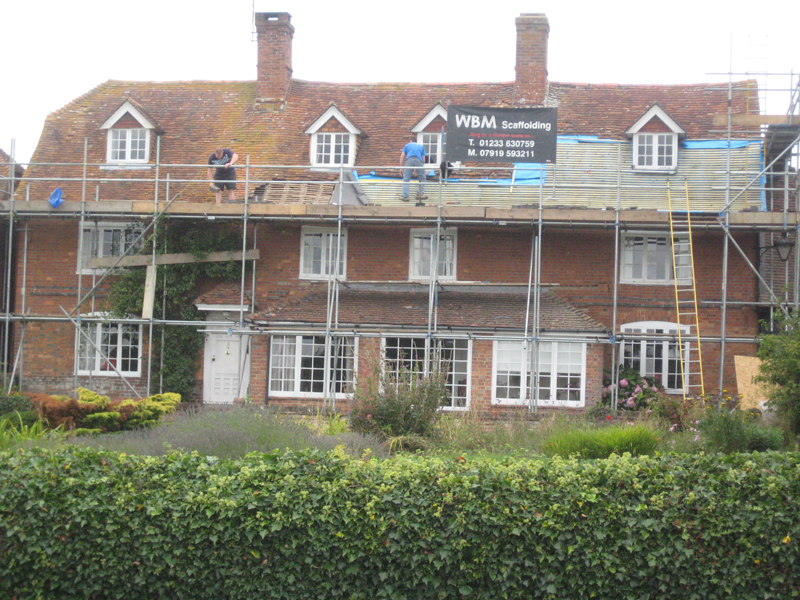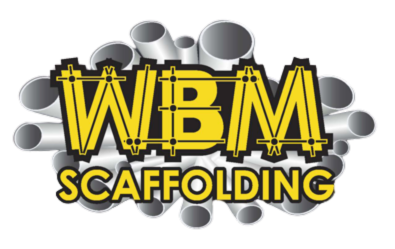Scaffolding is essential for many types of building work, from roof repairs to full renovations. However, when scaffold structures are installed near or directly on your property, it’s natural to ask: what happens if something goes wrong? If scaffolding damages your home, who’s responsible, and are you covered?
Let’s explain the insurance responsibilities involved, how to check if you’re protected, and what steps to take before scaffolding is installed on or around your property.
Common Types of Scaffolding Damage
While most scaffolding is erected and dismantled professionally and safely, accidents can still occur. Common examples of damage caused by scaffolding include:
- Cracked roof tiles from pole placement or foot traffic
- Broken windows due to falling tools or boards
- Damage to render, brickwork, or gutters
- Garden structures or fencing knocked over
- Driveways or paving damaged by heavy scaffolding bases
- Leaks caused by disrupted roofing felt during erection
Although these incidents are relatively rare, they can lead to disputes between property owners, contractors, and scaffolders if not properly addressed.
Who Is Liable if Scaffolding Damages Your Property?
Liability depends on how the damage happened and who installed the scaffolding. In most cases, the scaffolding company or main contractor is responsible, provided:
- They installed the scaffold
- They failed to follow safe working practices
- Their team caused the damage while setting up, using, or removing the structure
That’s why professional scaffolding firms — like those offering scaffolding services in Kent — always carry public liability insurance. This protects you and them if something goes wrong.
However, there are exceptions. If the scaffold was tampered with, moved by someone else, or not used correctly by the site team, liability may shift to others.
Are You Covered by Your Home Insurance?
In many cases, home insurance does not automatically cover scaffolding damage caused by a third party. You’ll need to check:
- If your buildings insurance covers external damage from contractor work
- Whether your insurer requires notice before scaffolding is installed
- If the scaffolding company’s insurance is primary, and yours is secondary
It’s always a good idea to inform your insurer before major works begin, especially if scaffolding is involved. They may request additional details about the work, the contractor, or the scaffold design.
If you live in a terraced or semi-detached property, also speak to your neighbours — especially if the scaffold crosses onto their roof or driveway.
What Should a Scaffolding Company Provide?
Before any work starts, a reliable scaffolding firm should supply:
- Proof of public liability insurance — usually £5 million or more
- A risk assessment and method statement
- Details of how and where the scaffold will be placed
- Confirmation of protective measures, such as boards under poles, netting, and edge guards
- A contact number in case of problems during the hire period
At WBM Scaffolding, we always issue clear paperwork before starting, so both the client and property owners know exactly what’s being installed and how long it will be in place.
How to Protect Your Property Before Scaffold Is Erected
Here are some practical steps you can take before scaffolding goes up:
1. Take Photos
Document the condition of your property — including walls, windows, roof, gutters, and garden features — before the scaffold is installed. This helps with any insurance claims later.



2. Move Fragile Items
Remove or cover outdoor furniture, planters, ornaments, or vehicles that may be in the path of scaffold poles or boards.
3. Speak With the Installer
Ask how the scaffold will be anchored, whether it will touch walls or tiles, and if any parts will rest on softer ground or decking.
4. Request Ground Protection
If scaffold legs are going onto patios, driveways, or lawns, request that boards or base plates be used to prevent sinking or cracks.
What to Do If Damage Occurs
If you believe scaffolding damages your property:
- Report it immediately to the scaffolding company or contractor managing the project.
- Take dated photographs and record details of what was damaged and when.
- Check insurance documents from both the scaffolders and your own insurer.
- Request confirmation in writing that the company accepts or disputes responsibility.
- Contact your insurer if needed and provide any documentation or quotes for repair.
Most professional scaffolding companies will resolve damage claims fairly and promptly. The key is early communication and proper evidence.
Are Scaffolders Required to Have Insurance?
Yes. Any business providing scaffolding services in the UK — whether for domestic or commercial work — should carry:
- Public liability insurance – covers third-party property and injury claims
- Employer’s liability insurance – covers their own team
- Professional indemnity (in some cases) – especially if designing custom scaffold systems
When hiring scaffolders, always ask for a copy of their insurance certificate. It’s your safety net if problems arise.
Can I Claim if I’m a Neighbour?
Yes — if your neighbour’s building work includes scaffolding that damages your home or land, you may have the right to claim under their contractor’s insurance. In shared or adjoining properties, scaffold can easily span across roofs or walls.
Always:
- Ask to see documentation if scaffolding extends onto your land
- Speak to the homeowner or project lead early
- Record any concerns before work begins
If damage happens, follow the same process: report, photograph, and contact the party responsible for the work.
When to Be Extra Cautious
Some properties or projects carry more risk of scaffolding damage. Be particularly careful when:
- Your home has a fragile or historic façade
- Roof tiles are brittle or loose
- There is limited space for scaffold placement
- The work is planned during bad weather
- You share a wall or roofline with neighbours
In these cases, it’s even more important to hire a competent, insured, and experienced scaffolding provider. If you’re unsure, contact us here to discuss the safest way to set up scaffold for your property.
The Role of Good Communication
Many disputes over scaffold damage happen simply because parties didn’t talk beforehand. Clear communication with:
- Your contractor
- The scaffolding company
- Your neighbours
- Your insurance provider
will prevent confusion later on. Don’t wait for a problem to occur — raise questions early and get the answers in writing.
Round up on the Coverage
Scaffolding is a vital part of construction and maintenance work, but like any building method, it comes with risk. If scaffolding damages your property, you may be covered — but only if the correct insurance and safety measures are in place.
Before any scaffolding goes up:
- Confirm who’s responsible for the structure
- Request proof of insurance
- Protect vulnerable areas on your property
- Take photos as evidence
- Discuss concerns before work begins
At WBM Scaffolding, we provide safe, fully insured scaffolding services across Kent — and we always prioritise protecting the properties we work on. To find out more or book a site inspection, contact us here. You can also browse examples of our work and safety-first setups via our Instagram.
